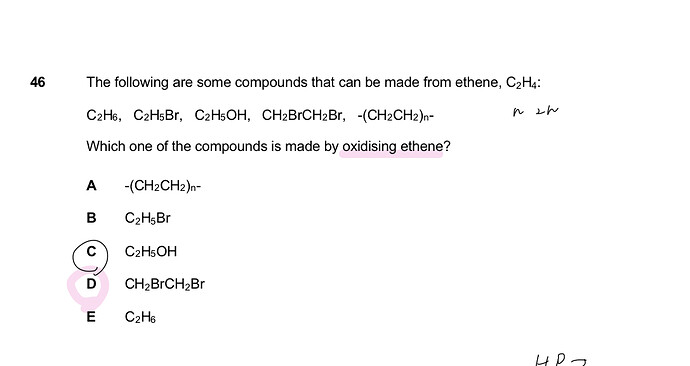Can you explain solution? I didn’t understand oxdising ethene
Hey!
Many of us had troubles with this question but @Ujjwal solved it:
Oxidation is loss of electrons, so when we make a saturated compound (only single bonds) from an unsaturated one (double bonds), we esentially LOSE electrons from double bond.
Therefore, when ethene reacts with bromine gas, an electrophilic addition reaction occurs where bromine atoms attack the double bond and take the electrons in order to form a bond with carbon atoms. It follows that the formation of dibromoethane is an oxidation of ethene, because previously there were 4 shared electrons in the double bond between carbons (C=C), but now there are only 2 (C-C), so the molecule has theoretically been oxidised.
Let me know if you need more explanation:)
Thank you!
I understand theory that you explained. However why we can not choose E? E is similar situation that means there are only c-c, isn’t it?
You actually have to reduce ethene to give an alkane (adding of hydrogen). Although ethylene oxide can be produced from oxidising ethene, it’s not an option here so the best choice is D as Darius explained
I finally understand your explanation after analysing the oxidation number of carbon.
Carbon of Ethene: -2
C: carbon of ethanol :-2 It is same as ethene
D: carbon of dibromoethane: -1 It means oxidising
E: carbon of ethane: -3 It means reduction.
Thank you Raya!!
